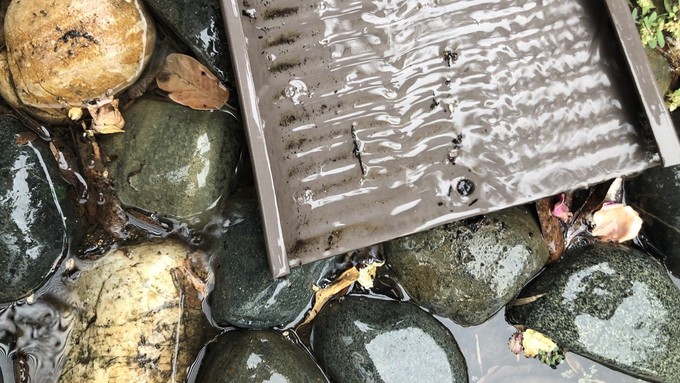
So far, 2022 among driest years in city's history

The downspouts and street gutters are full of rainwater -- at least today. Take this opportunity to note how the landscape is handling real rain. Kathy Morrison
November started with something Sacramento has seen little of this year: Rain!
Tuesday morning, the National Weather Service upped its original storm prediction from 0.1 inch to 0.25-0.5 inch – enough to turn off irrigation for at least a few days.
Rain is normal in November, the second month of our annual water year and the start of our usual rain season. November rain totals typically average just over 2 inches in Sacramento.
But there’s been nothing typical about our weather lately. 2022 most likely will go down as one of our driest years on record.
How dry has 2022 been? October had no measurable precipitation in Sacramento. We were also rainless in August and received barely a trace (0.01 inch or less) in February, May and July.
The first 10 months of 2022 have totaled 2.45 inches – almost 10 inches below normal for that period.
For more Sacramento area weather information and forecast: https://www.weather.gov/sto/#
To reach our annual average of 17.65 inches by Dec. 31, Sacramento will need 12.2 inches in two months. November and December are two of our rainiest months, averaging 5.32 inches for that 61-day period. But even double that amount will leave us far short of “normal.”
All that dry weather may have changed your landscape’s ability to cope with real rain. With so little deep-soaking moisture this year, soil may have become rock hard. (I know that’s true for sections of our lawn.) Watch out for runoff during heavy cloudbursts.
During this storm, note how your landscape is handling the water. Is it pooling or running off? Can it soak in? Make note of problem areas. (The solution may be more mulch or compost.)
Remember to irrigate plants that rainwater may have missed, particularly under large trees or eaves.
Most likely, the winds that accompanied this rain knocked down a lot of leaves. (November also marks the start of Sacramento’s leaf season.) Remember to rake leaves away from gutters and storm drains, too.
After so much drought, we’ll take any rain we can get. This storm may not produce a huge total, but it’s a start.
Comments
0 comments have been posted.Sacramento Digs Gardening to your inbox.
Sites We Like
Garden Checklist for week of July 21
Your garden needs you!
* Keep your vegetable garden watered, mulched and weeded. Water before 8 a.m. to reduce the chance of fungal infection and to conserve moisture.
* Feed vegetable plants bone meal, rock phosphate or other fertilizers high in phosphate to stimulate more blooms and fruiting. (But wait until daily high temperatures drop out of the 100s.)
* Don’t let tomatoes wilt or dry out completely. Give tomatoes a deep watering two to three times a week.
* Harvest vegetables promptly to encourage plants to produce more. Squash especially tends to grow rapidly in hot weather. Keep an eye on zucchini.
* Pinch back chrysanthemums for bushy plants and more flowers in September.
* Remove spent flowers from roses, daylilies and other bloomers as they finish flowering.
* Pinch off blooms from basil so the plant will grow more leaves.
* Cut back lavender after flowering to promote a second bloom.
* It's not too late to add a splash of color. Plant petunias, snapdragons, zinnias and marigolds.
* From seed, plant corn, pumpkins, radishes, winter squash and sunflowers.